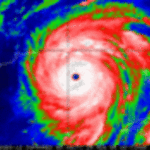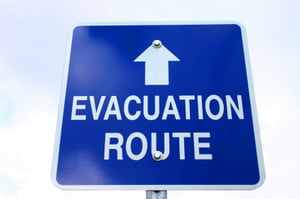The history of Texas hurricanes in the 20th century seems to be a history of frequent hurricanes followed by years of no hurricanes at all. Texas also had the worst hurricane in American history in terms of loss of life. In the early years of the 29th century, hurricanes were not given names.
The worst hurricane every to hit Texas in the history of the 20th century came ashore in Galveston on September 8, 1900. The hurricane was first detected over the tropical Atlantic on August 27. It reached Cuba as a tropical storm on September 5. By the time it reached Galveston on September 8, it was a category 4 hurricane with an 8 to 15 foot storm surge.
Galveston was, at this time, one of the wealthiest communities not only in Texas but also in the United States. It was a bustling port with many millionaires. Galveston boasted electricity and the telephone, very rare for a community of only 38,000 people. It had an opera house, 58 miles of streetcar track, and foreign consulates for 19 countries.
The hurricane and 8 to 15 foot storm surge destroyed the downtown area and was responsible for around 10,000 deaths, over one quarter of the total population of Galveston. This death toll is the largest weather related loss of life in the history of Texas and of the United States. There were so many bodies that they had to be burned and bodies continued to be found until February of the following year.
Galveston never recovered from this blow. It lost its pre-eminence as a port and the wealth moved elsewhere.
The next hurricane to hit Texas was on July 20, 1909. The hurricane passed over Velasco where the calm center lasted 45 minutes. Then came winds that destroyed on half the town.
On August 16, 1915 Galveston was hit again by a hurricane. A 12-foot storm tide overwhelmed the 10-foot seawall and the downtown district was flooded to a depth of 6 feet. 275 people died.
On Sept. 14, 1919 the forth most intense storm of the 20th century landed south of Corpus Christi. Ten ships were lost at sea, accounting for 500 of the 800 to 900 deaths. Tides were 16 feet above normal and 287 lives were lost on land.
Hurricane Audrey was the first named hurricane to reach Texas. It made landfall on the Texas-Louisiana border on June 27, 1957. The storm surge was 12 feet and 390 people died.
On Sept 9, 1961 Hurricane Carla filled the entire Gulf of Mexico and caused the 9th largest evacuation to date, with over one half million people leaving their homes. The coastal areas and islands off the waters of Texas and Louisiana were evacuated. Only 46 people lost their lives.
Beula made landfall between Brownsville Texas and the mouth of the Rio Grande on Sept. 20, 1967. It caused 18-foot storms surge and winds to 136 miles per hour. Rains were 20 to 30 inches and it spawned a great number of tornadoes. The storm surge made 31 cuts through Padre Island. There were 15 deaths.
Hurricane Celia crossed the coast north of Corpus Christi August 1, 1970. There were 160 mile an hour winds and damages of 1.6 billion dollars (1990 dollars). Eleven people died.
In 1983 Hurricane Allen reached category status 5 three times while still over water. It moved inland on Aug. 9 north of Brownsville. There was a storm surge of 12 feet across Padre Island and winds to 129 miles per hour. Two people were killed.
The mainland of the United States had not been hit by a hurricane since 1988 when category 3 Alicia made landfall in Texas on August 18, 1980 about 25 miles south west of Galveston. There was no loss of life.
Although Gilbert did not hit Texas it did come close and it is notable for having the lowest sea level pressure ever recorded in the Western Hemisphere, about 26.23. It made landfall in Mexico where there was a great loss of life and property.
Texas had a long spell of freedom from hurricanes, a period from Alicia in 1983 to Gilbert in 1999. It was a category 4 when it made landfall on Sept 22 but it hit in a sparsely populated area and there was little damage and no loss of life.
From the beginning to the end of the 20th century we can watch the history of hurricanes in Texas as the science of prediction increasingly saves lives.




